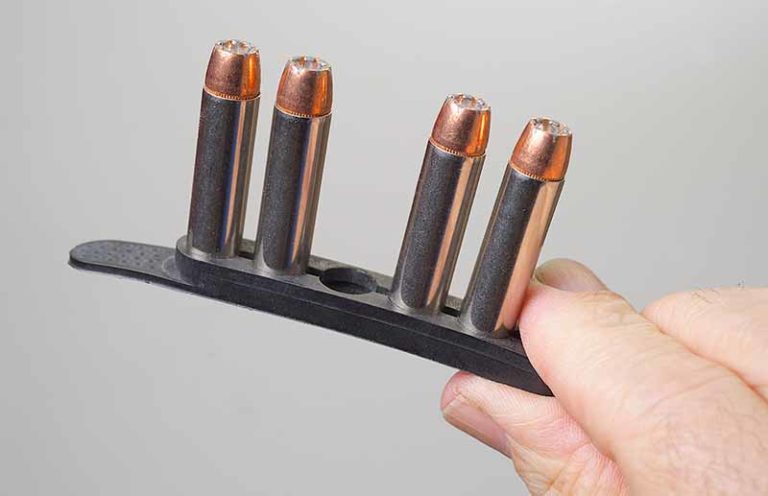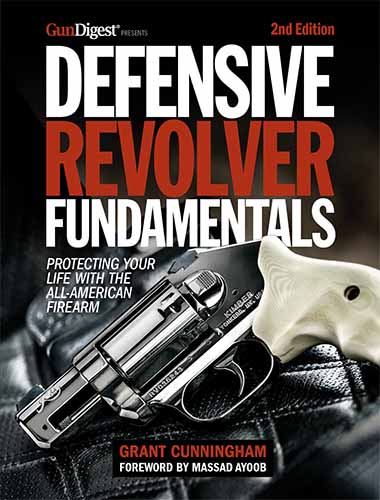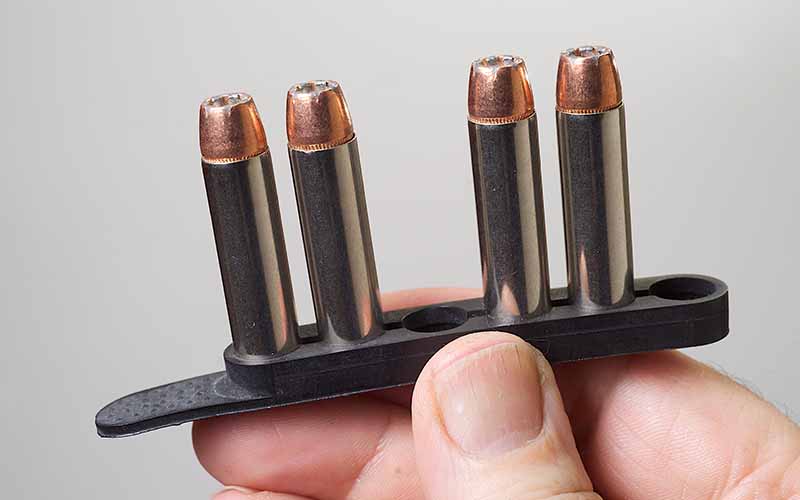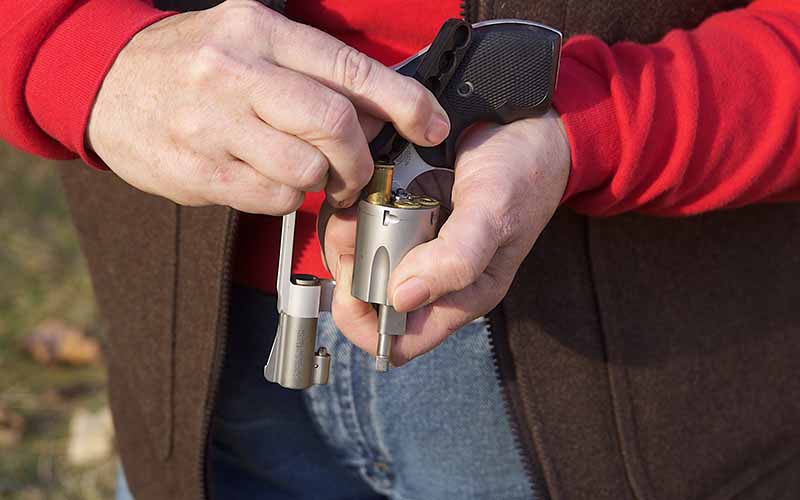
The use of a speed strip is an excellent way to expedite tactical revolver reloads, but they require some skill to properly use.

The SpeedStrip, Tuffstrip and other similar products are rubber strips that hold rounds by their rims. (SpeedStrip, like “Kleenex,” is a brand name that's come to be used to refer to any such devices. It's a registered trademark of Bianchi International.) Generically referred to as speed strips, these loaders hold the rounds in a row, so they're flat and convenient to carry.
Since speed strips are only used to insert two rounds simultaneously, they're much slower and more dependent on fine motor skills than speedloaders. To help compensate for their shortcomings, I have a specific way of configuring and using them.
First, carry only four rounds in your strips. Start at the tab end and load two rounds, leave one blank space, and load two more rounds leaving a leftover space at the other end. This setup provides a handling tab at each end and one in the middle.

No matter how you wind up grabbing the strip, you'll have a way to hang onto it and sufficient space to get your fingers in to manipulate the rounds as they go into the cylinder. This makes a big difference when peeling the strip off the rounds after inserting the cartridges into the chambers.

Retrieve the strip (I prefer carrying them in a back pocket or the watch pocket of a pair of jeans) and insert two rounds into adjacent chambers. Again, proprioception is your friend: bring the ammo toward the palm of the hand holding the cylinder, wiggle slightly to get the bullet noses started into the chambers and push the rounds in. Then ‘peel' the strip off the case heads, allowing them to drop the rest of the way into the cylinder.

If time permits, do the same with the other two rounds. I don't shift the strip in my hand; I simply use the heel of my palm to push them into the chambers and then peel off the strip.
Now drop the strip and close the cylinder. You're back in business.
Editor's Note: This article is an excerpt of Defensive Revolver Fundamentals, 2nd Edition.
More On Defensive Revolvers:
- .357 Magnum Revolver: Controllable Concealed Carry Options
- 9 Best Concealed Carry Revolvers For Personal Defense
- Fighting Revolver Project: Smith & Wesson Model 586
- Rolling With A .45 ACP Revolver
- .410 Revolvers: Are They Really Good For Nothin’?
- Best 9mm Revolver: 5 Options For Everyday Carry

Next Step: Get your FREE Printable Target Pack
Enhance your shooting precision with our 62 MOA Targets, perfect for rifles and handguns. Crafted in collaboration with Storm Tactical for accuracy and versatility.
Subscribe to the Gun Digest email newsletter and get your downloadable target pack sent straight to your inbox. Stay updated with the latest firearms info in the industry.

![Best Concealed Carry Guns In 2025 [Field Tested] Wilson Combat EDC X9S 1](https://gundigest.com/wp-content/uploads/Wilson-Combat-EDC-X9S-1-324x160.jpg)


![Best 9mm Carbine: Affordable PCCs [Tested] Ruger Carbine Shooting](https://gundigest.com/wp-content/uploads/Ruger-Carbine-Shooting-100x70.jpg)
![Best AR-15: Top Options Available Today [Field Tested] Harrington and Richardson PSA XM177E2 feature](https://gundigest.com/wp-content/uploads/Harrington-and-Richardson-PSA-XM177E2-feature-100x70.jpg)

I’ve carried strips but never as primary reload but haven’t done so in years I have some in 44mag which is a nice flat way to carry handy reloads while hunting reloads. If you 1 or 2 shots it’s easy to reload those chambers. Sometimes I use them for a single shot .410.
Pictures show a slow and cumbersome reload.
Smoother version:
Revolver trigger guard placed in support hand while strong thumb actuated cylinder latch.
Fingers of support hand rotate cylinder out and support thumb strokes ejector rod. (Muzzle elevated)
Simultaneous strong hand grasps reload carried on strong side of body.
Reload with muzzle depressed.
Support hand swings cylinder shut while control hand grips revolver and gets back in fight.
Silly to only load 4 in a strip, if you drop one out of the six you are still one round ahead of 4. Why play reverse Russian Roulette?